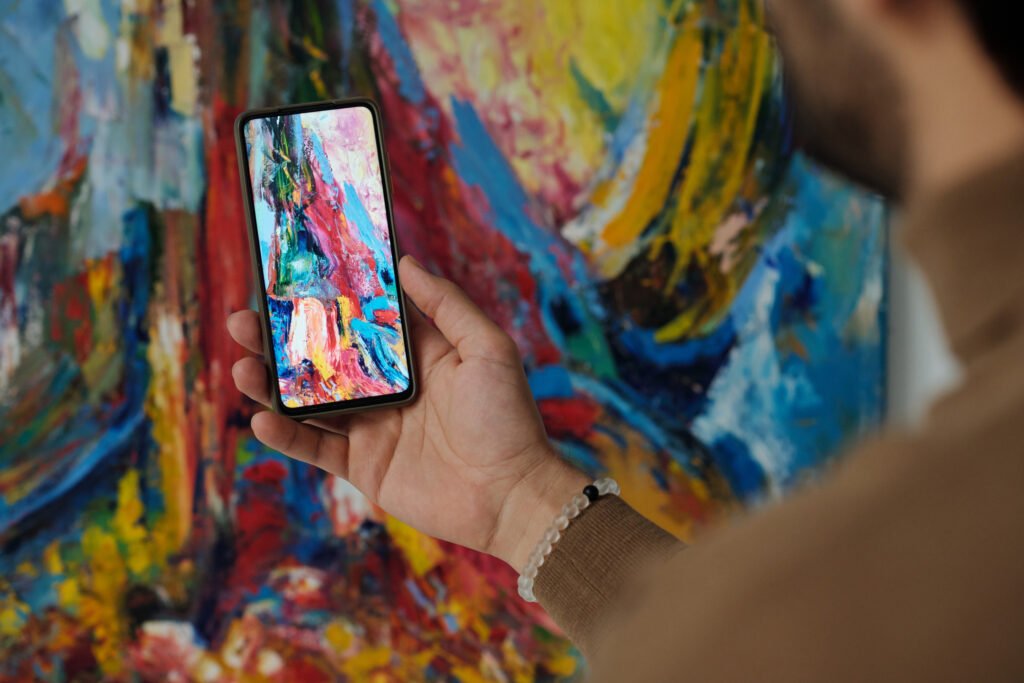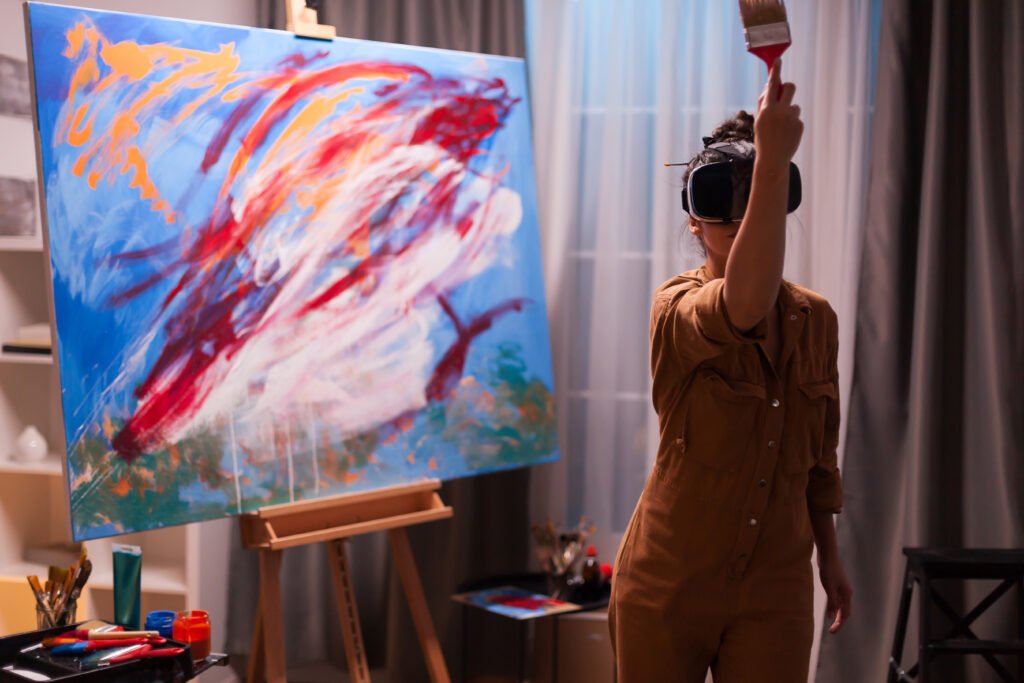Contemporary art reflects a world in constant transformation. For that reason, it could not remain untouched by the impact of technology.
In recent decades, digital advances have changed how we produce images, sounds, and texts. They also transformed how we communicate, interact, and experience daily life.
Naturally, this new landscape has had a direct influence on the art world, paving the way for unprecedented experimentation and once-unimaginable forms of expression.
Today, the relationship between art and technology goes far beyond simply using digital tools in the creation of artworks. It deepens through the integration of virtual environments, artificial intelligence, augmented reality, programming, and social media.
In this context, contemporary art takes on new dimensions and engages intensely with innovation. This dialogue not only keeps pace with the present moment but also actively helps shape the aesthetics and discourse of 21st-century art.
The Multiple Forms of Expression in Digital Art
With the rise of digital art, artists have begun to use software, sensors, algorithms, and online platforms as raw materials for their creations. The computer screen has become both a studio and a gallery. The mouse has replaced the paintbrush, and code has become an artistic language as legitimate as oil on canvas. This shift in medium has expanded creative possibilities and opened new paths for exploring form, movement, and interactivity.
Among the most widely used formats in digital art are immersive installations, interactive pieces, generative videos, virtual reality environments, and projects developed with artificial intelligence. Each of these approaches stimulates audiences in different ways, often positioning the viewer as an active participant in the work. The aesthetic experience, once centered on contemplation, now involves action, response, and direct engagement.

In addition, the exhibition space itself has changed. The internet allows artists to publish and distribute their work directly through social media, personal websites, and digital platforms. This breaks the idea of a closed circuit—composed only of galleries and museums—and democratizes access to artistic production. Anyone, anywhere in the world, can view, interact with, and even purchase digital artworks with just a few clicks.
Contemporary art has also embraced themes related to technology. Many works address digital surveillance, the impact of social media, the use of personal data, shifts in communication, and the ethical dilemmas surrounding artificial intelligence. This critical engagement positions art as an active agent in reflecting on the future and the limits of innovation itself.
The Impact of Technology on the Creation, Circulation, and Reception of Contemporary Art
Technology has not only expanded the means of artistic production, but also transformed how art circulates. With the rise of NFTs (non-fungible tokens), for instance, a new way of marketing digital works has emerged—one that ensures authenticity and market value for creations that once seemed impossible to sell as unique objects. This innovation has sparked debates about ownership, exclusivity, and sustainability in the art market.
Virtual environments have also enabled the creation of fully digital exhibitions and experiences. Museums now offer online tours, artists develop works specifically designed for web navigation, and entirely virtual galleries have emerged in the metaverse. These changes challenge traditional exhibition models and expand the reach of artworks, bringing them to audiences once excluded from the art circuit.
Another fundamental aspect is how artworks are received. Technology has changed the way audiences interact with art. Today, engagement goes beyond silent observation. Viewers photograph, share, comment, and even intervene in the works themselves. This dynamic redefines the function of art and invites the public to become co-creators, fostering more horizontal, inclusive, and collaborative experiences.
Ultimately, the integration of digital technology into contemporary art reinforces the idea that the artistic field is in constant motion. Rather than threatening the authenticity of art, technology becomes a partner in expanding meaning, renewing language, and forging more direct connections with the present. By embracing the digital, art reinvents itself, grows, and discovers new ways to engage with the world.



